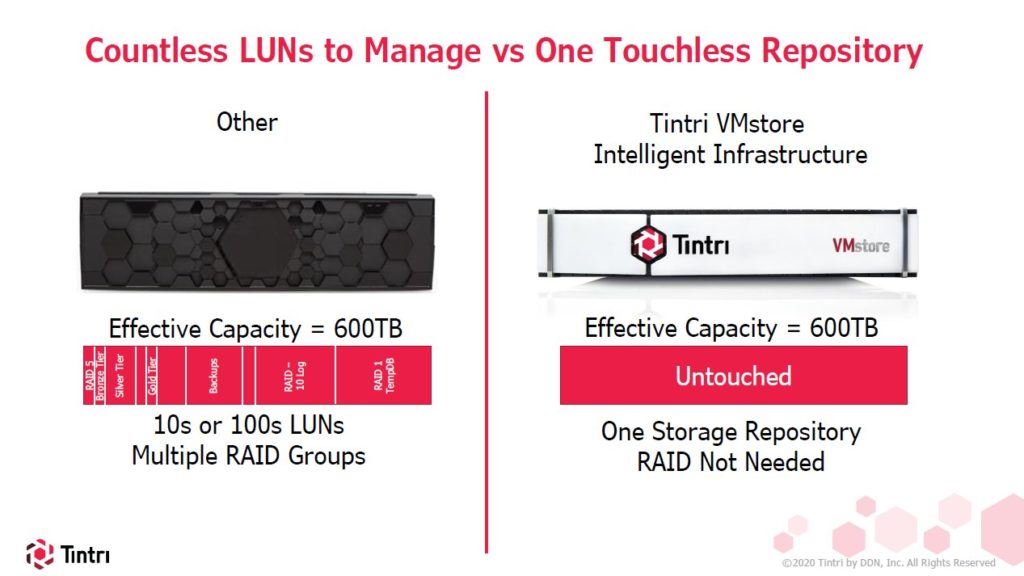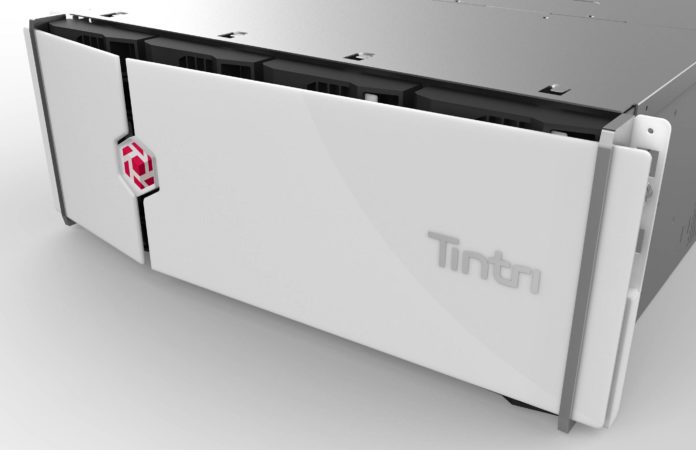Tintri has released an update to its VM-aware storage platform that delivers the same level of management granularity for SQL databases. Benefits include making it easier to clone databases and the ability for DBAs to directly provision more storage when needed.
SQL Integrated Storage builds on technology Tintri developed for virtual machines that made its VMstore arrays a popular choice in VMware environments. The latest release integrates storage directly with SQL Server, and simplifies and automates storage management tasks for SQL Server databases, and hence database administrators (DBAs).
This update has been on the cards for some time, and has been openly discussed on Tintri’s own blog.
The company points out that a single virtual machine may contain multiple databases, and this can complicate managing each one and its storage resources.
Send in the clones
“When you have one VM with several databases inside, you can have challenges of managing at the VM level. If you want to clone a database, for example, you have to clone the entire VM, operating system and everything. If you want to look at the performance or you want to isolate performance per database, that’s something that’s impossible,” says Tintri CTO Tomer Hagay.
Tintri is already starting from a point where it has advantages over other storage platforms in this respect, he says, because it already manages at the VM level. But now, with the new software release, “we’re looking inside those VMs and integrating directly with the database layer to deliver SQL integrated storage.”
As with VMstore and virtual machines, the update presents storage capacity as a single volume to support databases, doing away with the need to divide it into LUNs and RAID groups. This enables storage administrators to get a better overview of what is happening with storage on a per-database level, such as the number of instances of each database and its copies.

Integrating at the database level allows Tintri to look at all the objects that the SQL Server knows about, such as the databases and right down to the database file level. This is done without requiring any software agents to be deployed on the SQL Server. Instead, Tintri is using SQL Server Extended events, a system created for monitoring and collecting different events and system information from SQL Server.
This provides per-database visibility across the entire SQL Server database infrastructure, as well as database-level control of capabilities such as snapshots for data protection and replication. Snapshots are zero-impact, as they are performed without having to pause IO traffic, according to Tintri.
Tintri also claims that it is the only vendor capable of delivering QoS guarantees for each individual SQL Server database with resources being automatically allocated as necessary as IO requirements change for each database. It can provide real-time performance and capacity metrics for each database and database file, including identifying any database suffering from latncy issues.
In addition, it delivers a greater measure of self-service empowerment and self-sufficiency for DBAs, who will have the ability to provision more storage when required, rather than having to file a support ticket and wait for a storage admin to get around to fulfilling the request, according to Tintri.
SQL Integrated Storage comes as an update to the Tintri OS that powers the VMstore arrays, and does not require additional licenses.








